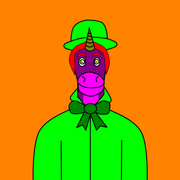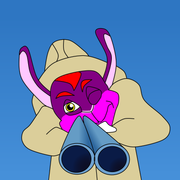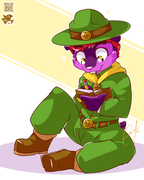Saturday, March 26, 2022
Bambi II

Not based on Felix Salten's literary sequel to the original Bambi on which the first film was loosely based, this is a midquel set during the winter and early spring of the first film with Bambi bonding with his father the Great Prince of the Forest as voiced by Patrick Stewart. Often Tastes Like Diabetes but is definitely one of the better direct-to-video Disney sequels.
Friday, March 25, 2022
Dune: House Corrino
 House Corrino by Brian Herbert
House Corrino by Brian HerbertMy rating: 4 of 5 stars
The third and final installment of authors Brian Herbert and Kevin J. Anderson’s Prelude to Dune trilogy is dedicated to their wives, with various acknowledgments to individuals such as Penny Merritt for maintaining the literary legacy of her father Frank Herbert, the editors, the audiobook producers, test reader Diane E. Jones, the publishers, and the writers’ families. As in most other books in the storied franchise, each chapter opens with a philosophical quote from a Duniverse character, which really helps the pantheon’s installments stand out.
Despite its title, House Corrino gives equal time to the three major families of the Duniverse, with the first chapter indicating discontent for the Harkonnen clan by the Fremen of Arrakis. In the meantime, Emperor Shaddam Corrino IV anticipates the conclusion of Project Amal, which aims to develop a potent substitute for the spice melange. Duke Leto Atreides also continues to mourn the death of his first son Victor, and rejects an offer by the Tleilaxu to clone him. D’murr also still serves as a Navigator for the Spacing Guild, with habitation of its headquarter world, predating the Guild itself.
The Emperor early on finds his rule challenged by a possible heir to the Golden Lion Throne, Tyros Reffa, and D’murr’s brother C’tair serves the insurrection on Ix. Duke Leto furthers his relationship with his concubine Jessica, and conceives a child that the Bene Gesserit wishes to be female, although Leto is confident his latest scion will be a boy, whom he wishes to name Paul in honor of his late father. Jessica ultimately goes to the Imperial Palace on Kaitain to have her baby there, with a firestorm of events revolving around the offspring’s eventual birth towards the end.
Overall, this is an enjoyable conclusion to the trilogy, with Herbert and Anderson very well maintaining the literary legacy of the former’s father, with a nice mixture of politics, religion, and science. There are occasional details that slipped this reader’s mind, and those new to the Duniverse would definitely find it better to start the Prelude to Dune trilogy from its first installment, even if they don’t go to the series’ chronological start of the Legends of Dune trilogy. The trilogy’s conclusion is definitely a cornerstone of science fiction, as was the case with Frank Herbert’s original entries.
View all my reviews
Thursday, March 24, 2022
Lost in Space (2018 TV series)

A contemporary adaptation of the original monochrome science-fiction TV series following the space family Robinson's attempts to get home while lost in space. Will definitely age better than the original series, and while there are some oddities such as the addressing of the "Danger Will Robinson" robot as "Robot," I definitely enjoyed it.
Tuesday, March 22, 2022
Ender Lilies: Quietus of the Knights
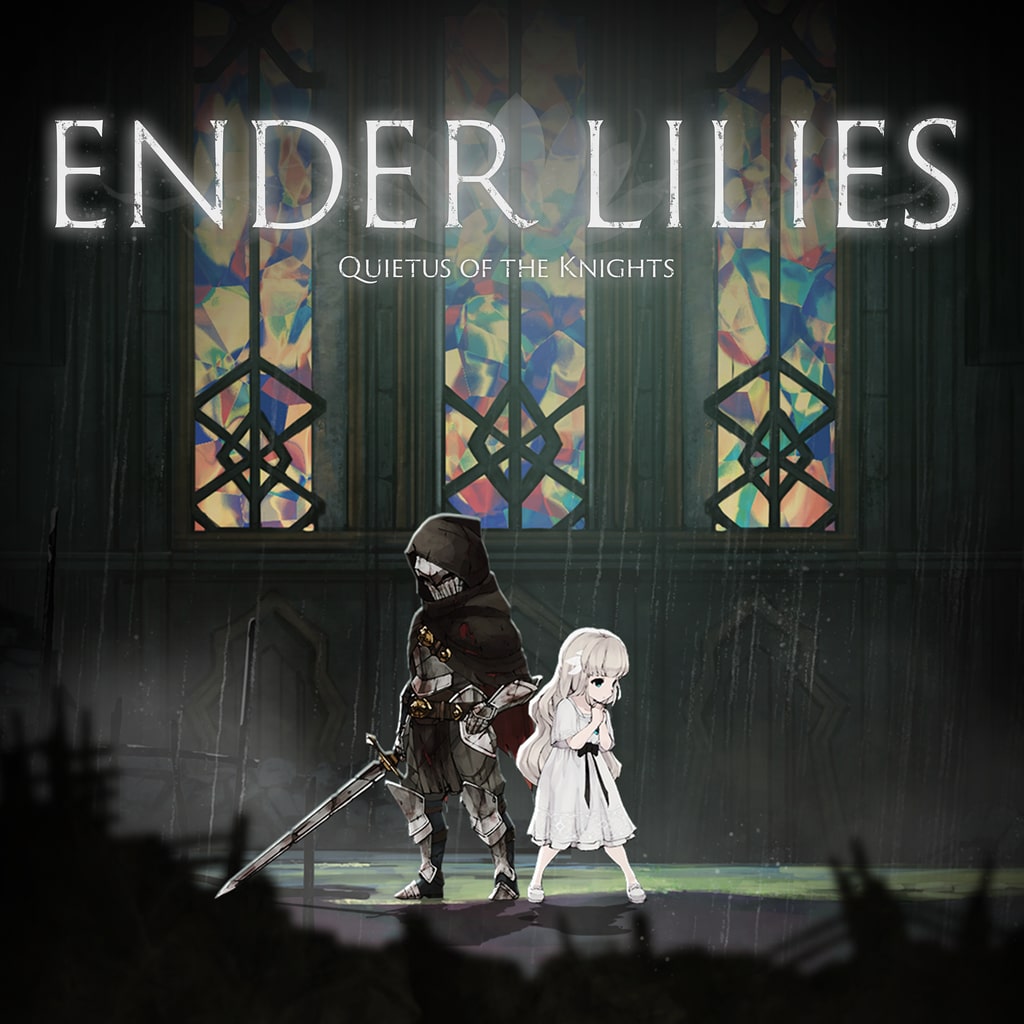
In recent time, Metroidvanias have somewhat become one of my favorite gaming genres, given the positive experience in particular I’ve had with those that originated in the West, with the genre having originated in Japan as a combination of elements from RPG Castlevanias beginning with Symphony of the Night and Nintendo’s Metroid franchise. There’s definitely a world of difference between the Eastern and Western Metroidvanias, and under objective scrutiny, one can find major flaws on Konami’s godfather of the genre. A more contemporary Metroidvania is developer Adglobe and Live Wire’s Ender Lilies: Quietus of the Knights, published by Binary Haze Interactive. Does it deserve high recognition among the best of the genre?
The narrative follows Lily, final surviving priestess in a world that endless, oppressive precipitation has devastated, driving living beings into dementia and transforming them into immortal undead. The protagonist awakens in a church with no memory of recent events, exploring beyond her sanctuary to find the rain’s source, along the way summoning the spirits of the purified dead to assist her. Aside from some derivative elements such as amnesia and the “white savior” trope, not to mention frequent poor direction on how to advance the narrative, Ender Lilies generally tells its story well, with endless texts Lily comes across adding superb backstory, along with the defeat of major bosses she purifies, and never feels forced down the player’s throat. The translation definitely helps, with some great dialogue, although there are occasional odd stylistic choices.
At heart, Ender Lilies is a sidescrolling Metroidvania, with Lily able to equip two different sets of three spirits between which the player can swap, with many having unlimited uses, although others have finite usages, not to mention cooldown times, players able to change and enhance them, through specific materials, at Respite Points, which serves as the game’s primary means of recording progress and fully restoring the priestess protagonist, although doing so causes all defeated enemies to respawn, similar to entries of the Soulsborne subgenre. Moreover, Lily can teleport between Respite Points and, in the middle of the vast interconnected world, transport to the last one used, as she does when losing all health, mercifully with no penalty aside from needing to retread their steps.
Lily gains experience from killing enemies, gaining levels along the way, up to a hundred, although this mostly affects her attack power, with health increases sporadically found throughout the connected world, along with occasional increases to points dictating how many relics with additional effects such as reduced damage and increased damage during ground or aerial attacks, each relic costing from zero to four of the mentioned units to equip. She further has a finite number of healing prayers she can execute to restore some of her health, certain accessories increasing her maximum number of restorations, in one case their potency.
Lily occasionally receives new abilities to enhance her exploration of the game’s world, with many discoveries requiring certain combinations of these skills, some of which can admittedly be tricky. Perhaps the biggest hurdle to accessibility in Ender Lilies is that many bosses can be walls preventing the player from advancing, often having tricky patterns, although there are rare cases where, if the player deals enough damage in succession, they can temporarily stun a few of them. Even at the maximum level and every health enhancement, the final boss was incredibly tricky for me, although the game mechanics certainly have many positives in the end.
The same one could say of control, with plentiful positive aspects such as the Metroidvania exploration that gradually unlocks throughout the game, not to mention easy interface, an in-game map of the vast interconnected world, the ability to pause and even hide the menu options, which can really come in handy during events such as boss fights, the indicator of whether chambers have undiscovered elements, and so forth. However, one major weakness is that no submaps of each area exist, and one can find himself or herself searching everywhere for whatever they have yet to find without the assistance of online maps of said chambers, not to mention the frequent poor direction. Ultimately, interaction could have definitely been better.
One of the high points of Ender Lilies, however, is its aural presentation, with great sound effects that provide good ambience, superb instrumentation, and many gorgeous tracks, not a bad tune throughout the game. However, there is occasional silence during a few parts of exploration and on occasion cutscenes, but otherwise, sound very much serves the game well.
The same goes for the visuals, which very well convey the dark fantasy milieu of Ender Lilies, given pretty environments and colors that largely emphasize whitish and grayish hues and crimson blood effects, with smooth animation by Lily, her spirits, and the enemies. The only major flaws are that one can find it difficult at a few points to remember which enemies are which, given similar designs, and platforms are sometimes hard to discern. Regardless, a beautiful game.
Finally, depending upon the player’s skill, one can finish the game in as little as twenty hours, although a near-total exploration of the vast labyrinth and several tries against the final boss took me thirty, with little lasting appeal given that players can acquire all achievements within a single playthrough.
On the whole, the verdict is that while Ender Lilies does have many things going for it, such as the ideas behind its Metroidvania gameplay, the great narrative style consisting largely of excellent lore and backstory, and the gorgeous aural and visual presentations, the above-average difficulty will most certainly deter mainstream players, one may need to reference the internet to obtain absolute one-hundred-percent completion, and there isn’t much motive to play any longer or go through the whole game again. Those who adore Soulsborne games will be the ones most likely to appreciate the game, provided that they’ve gotten too “gud” at entries of that subgenre and somehow find it easy, although my own experience I certainly wouldn’t consider a waste.
This review is based on a playthrough of a digital copy downloaded to the player’s PlayStation 4 to the standard ending with 87% of Trophies acquired.
The Good:
+Lots of gameplay variety and Metroidvania exploration.
+Great story not forced down the player’s throat and polished localization.
+Gorgeous aural and visual presentation.
The Bad:
-Difficulty will deter many.
-Guide necessary for 100% completion.
-Little lasting appeal afterwards.
The Bottom Line:
A competent but daunting Metroidvania.
Score Breakdown:
Platform: PlayStation 4
Game Mechanics: 6.5/10
Controls: 6.5/10
Story: 8.0/10
Localization: 8.5/10
Music/Sound: 9.5/10
Graphics: 9.0/10
Lasting Appeal: 1.0/10
Difficulty: Hard
Playing Time: 20-30 Hours
Overall: 7.0/10
Monday, March 21, 2022
The Sorcerer's Daughter
 The Sorcerer's Daughter by Terry Brooks
The Sorcerer's Daughter by Terry BrooksMy rating: 4 of 5 stars
The third and final entry of author Terry Brooks’ Defenders of Shannara trilogy opens with the wicked gray-robed sorcerer Arcannen Rai wandering the streets of Arishaig, with his estranged daughter Leofur in Paranor, believing that Chrysallin “Chrys” Leah demonstrated potential as a future member of the Druid order, given her talents with the wishsong, although she finds herself kidnapped. Meanwhile, her brother Paxon serves as a guard for gathering Federation delegates, although a dark creature known as a Sleath kills many members, the Druid delegation managing to escape unscathed. A new character, the shapeshifting tracker Imric Cort, receives intricate backstory, and ultimately agrees to help Leofur track down the missing Chrys through a magical “safety line.”
Paxon finds himself and several Druids on the run from Federation officials, with the Leah Highlander teaming up with Miriya to return to Paranor, although a storm throws them off course. Leofur and Imric continue their search for Chrys, receiving major clues in the town of Grimpen Ward, where they hear about the culprit, Melis the Murk Witch, and meet a young man named Olin who has ties to her. Melis in the meantime keeps Chrys in a crate with airholes, with a battle ultimately erupting in the witch’s cottage. Paxon and Miriya return to Paranor, facing Arcannen in one of the final chapters, with a romantic twist in that which ends the book.
Overall, I definitely don’t regret reading The Sorcerer’s Daughter and its preceding books in the Defenders of Shannara trilogy, given their character development coupled with fantastical action in its believable fantasy setting, not to mention many twists in the third entry’s narrative. Granted, those unfamiliar with the franchise may wish to read previous subseries in the Shannara universe, given the scarcity of reference to the world as it was before the fantasy series, but those who have enjoyed entries chronologically prior to the Defenders books will most likely enjoy this one, and I very much look forward to reading the Fall of Shannara tetralogy that follows.
View all my reviews
Sunday, March 20, 2022
Puzzle Quest: The Legend Returns

Bejeweled: The RPG
The year 1990 saw the release of the computer wargame Warlords, the brainchild of developer Steve Fawkner and the Strategic Studies Group (SSG); the franchise would receive three mainline sequels and the spinoff series Battlecry. At the turn of the millennium, Fawkner developed a fondness for the match-three puzzle game Bejeweled, consequentially proposing a hybrid puzzle/RPG title that would eventually become Puzzle Quest: Challenge of the Warlords, which would receive several ports and spinoffs such as the science-fiction themed Galactrix, not to mention a direct numbered sequel. A few years after the Nintendo Switch came into existence, the original game would receive a port entitled Puzzle Quest: The Legend Returns, which included the original game’s expanded content. Is it worth experiencing?
The story of Puzzle Quest occurs in the Warlords universe, players able to choose a protagonist of one of various classes. The background to the primary plot is very intricate, supplemented by rumors in taverns, many of which require a payment. There are also some twists such as female dwarfs having beards, although there are a few asinine aspects such as pegasi having eggs. Regardless, the narrative never feels forced down the player’s throat, with potential variations depending upon which character class the player selects, sidequests adding further story. The only real major complaint is the somewhat-shallow nature of the “present” storyline, but otherwise, the plot rises well above average.
Mercifully, solid gameplay backs the experience, with The Legend Returns occurring on a dot-connected world akin to titles such as Final Fantasy Tactics. Primary quests and sidequests form the chief narrative structure, with many involving one-on-one encounters between the player’s character and an enemy. Combat occurs with an eight-by-eight grid with jewels of different types, including those colored red, green, yellow, and blue, respectively representing the elements fire, earth, air, and water. Other jewels include those indicating money and experience, as well as skulls which, when three or more the player or enemy matches, damages the opponent.
Matching money or experience tiles gives points to the player, the amounts matched remaining even if the enemy wins the battle, and elemental tiles grant their respective points to either side, with each having skills that require certain amounts to execute and have various effects such as damaging the other side, curing ailments, and so forth. Before using skills, however, one must consider the enemy’s elemental resistances, since if they have at least a certain percentage, skills composed of at least one of the used elements can randomly fail if the player attempts to use them, with the same sometimes going for the enemy’s use of their own abilities.
Matching four or more tiles grants the player’s character or the enemy an additional turn, with these mercifully not stacking, given the possibility of endless matching combinations when tiles fall, and should the player score a combo of matches enough, they gain an additional hundred experience points. When there are no possible matches on the jewel grid, it empties and refills with new jewels, with the player and the enemy losing all their mana points, which can at times be a blessing or a curse. The player wins a battle by exhausting all an enemy’s health, with defeat occurring when the adversary does the same to the player.
Regardless, Puzzle Quest is mostly accommodating towards players of different skill levels, given the indicators of the relative toughness of the game when choosing a class as which to start, and before facing enemies, they can choose one of three difficulty levels, which seems in many cases to affect the A.I. of the enemy, which can at times seem to be a cheating bastard depending upon the situation, given their typical matching of fours-of-a-kind when available, and on occasion making the player miss a couple of turns with certain skills. Other features include the ability by the player to build a citadel that can allow them to train mounts, siege other towns, “capture” enemies to learn skills from them, and the like. Generally, the puzzle/RPG fusion works well.
Control in many cases serves the game well, given the general difficulty of getting lost, what with yellow fog around towns indicating the next story objectives and blue fog indicating how to advance sidequests, of which there are definitely many in Puzzle Quest, players able to have four at a time active. However, there are some quality-of-life features that are absent, such as the inability to save and quit in the middle of battle, which can be a burden since they can take some time, no in-game clock, and there is noticeable lag when navigating the game interface on the overworld. Ultimately, interaction is above average, although there are definitely kinds the developers could have ironed out.
The rerelease has a fitting fantasy soundtrack with many good tracks such as the overworld theme and battle themes, although there is noticeable pausing and looping with whatever various tunes alternate in combat. The music further changes whenever the player’s character is low on health or when they’re on the brink of defeating the enemy, which isn’t a bad think, although the female voice that warns players that they’re low on health and inform them that they’ve lost, if they do, will definitely enrage many gamers. Generally, the aurals are good, but the tracks could have been more diverse.
The visuals are nice and colorful, with decent art direction and character portraits, although for the most part they’re static and don’t change emotions. Puzzle Quest, I should mention, is mostly one of those games that relies on interface design in terms of graphics, and in battle, there isn’t any kind of window that actually shows whatever actions either side takes, if any. Overall, the visual presentation is generally nothing about which to write home.
Finally, one won’t be able to gauge total playtime without a stopwatch, although there is plentiful lasting appeal in the myriad of sidequests and different character classes that will undoubtedly give gamers a great bang out of their gaming buck, but completionist players definitely won’t appreciate the lack of any percentage completion indicators.
On the whole, Puzzle Quest: The Legend Returns is a great remaster of a game that was already good to begin with, given its addicting puzzle/RPG hybrid gameplay, intricate lore, good soundtrack, and plentiful side content. Granted, it does have a few issues the developers could have definitely worked out such as the luck and randomization involved in battle, the interface lag, the finite musical selection, and the simplistic graphics that largely rely on interface design. Regardless, while it was one of the very first of its kind, it was perhaps definitely the highlight of whatever limited experience I’ve had with the fusion of genres, and I very much wouldn’t hesitate to recommend it.
This review is based on a playthrough of a digital copy purchased and downloaded to the reviewer’s Nintendo Switch.
The Good:
+Great puzzle/RPG hybrid gameplay.
+Good mythos.
+Nice soundtrack.
+Plenty of extra content.
The Bad:
-Some luck and randomization involved in battle.
-A little lag.
-Limited music selection.
-Graphics somewhat simplistic.
The Bottom Line:
One of the best of the hybrid genre.
Score Breakdown:
Platform: Nintendo Switch
Game Mechanics: 8.5/10
Controls: 6.5/10
Story: 7.5/10
Music/Sound: 7.5/10
Graphics: 6.0/10
Lasting Appeal: 8.0/10
Difficulty: Adjustable and depends on class.
Playing Time: No in-game clock.
Overall: 7.5/10
Saturday, March 19, 2022
Bambi

Friday, March 18, 2022
Dune: House Harkonnen
 House Harkonnen by Brian Herbert
House Harkonnen by Brian HerbertMy rating: 4 of 5 stars
The authors of the Prelude to Dune subseries, Brian Herbert and Kevin J. Anderson, dedicate its second entry to Ed Kramer, who brought them together in the first place, and acknowledge their wives, families, literary representatives, the audio version’s producer, the test readers, and Frank Herbert, author of the original Dune series. Maps of a few of the planets serving as settings populate the portion of the book before its main text, and as with other books in the franchise, fictitious philosophical quotations precede each new chapter, among the quoted being character Pardot Kynes, a planetologist who asserts that life and discovery are dangerous.
The main text opens with a sandstorm, although Pardot is more interested in meteorological readings than protection, with his preteen son Liet accompanying him, and his father helping to terraform the desert world of Arrakis. On Giedi Prime, Gurney Halleck is slave to the Harkonnens, singing to relieve himself, and being reprimanded by security. Furthermore, Emperor Shaddam IV is unsuccessful in his attempts to produce a male heir to his throne, having only princesses. Duncan Idaho, moreover, yearns to become a Swordmaster, faithfully serving House Atreides.
Baron Vladimir Harkonnen also has failing health due to sexual experience, and C’tair tries to contact his Navigator brother D’murr. Preteen Jessica is additionally fostered by the Bene Gesserit Sisterhood, with the storylines sometimes overlapping, and tragedy terminating the second installment, which is enjoyable, although as with other entries of the series, certain details are easily missable. Even so, House Harkonnen provides a satisfying blend of political, religious, and technological overtones, and is recommended to fans of the series, although those new to it will definitely want to start with its predecessor House Atreides.
View all my reviews
Wednesday, March 16, 2022
Beastars
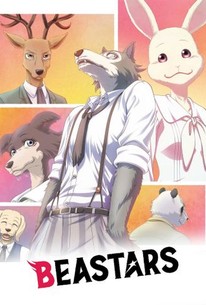
The Darkling Child
 The Darkling Child by Terry Brooks
The Darkling Child by Terry BrooksMy rating: 4 of 5 stars
The second installment of author Terry Brooks’ Defenders of Shannara trilogy opens with Paxon Leah perusing centuries-old documents, with the current Ard Rhys Aphenglow designating Isaturin as her successor, and the ritual where Aphenglow steps down transpiring. In the meantime, Dallen Usurient, Federation Commander of the Red Slash, leads an invasion of the town of Arbrox, where the main antagonist, Arcannen Rai, vows vengeance. Six weeks later, on a rainy night, Reyn Frosch walks into the Boar’s Head Tavern in the village of Portlow to give a performance, with Arcannen noting his talents and saving him from danger.
Paxon continues to practice with the Gnome Oost Mondara, while Arcannen visits what seems to be a brothel, the House of Rare Flowers, where the dark sorcerer finds Lariana, who yearns to study sorcery. Reyn and Lariana ultimately cross paths with one another, with Arcannen continuing to plot against the Red Slash for want of vengeance for the destruction of Arbrox. Paxon Leah and his Druid companion Avelene pursue Arcannen and his charges, with a celebration on a plateau that sports a memorial known as the Horn of Honor providing the black magician to get his vengeance.
The final chapter settles the fates of the various characters, and overall, this particular installment of Brooks’ Defenders of Shannara series is definitely a satisfying read, given its character development coupled with plentiful fantastical action, a smidgeon of politics occasionally weaving its way into the story. Granted, there were often times where I found it very difficult to imagine the appearances of the diverse luminaries playing part, with the reference to Paxon as a “Highlander” not helping, and thus, some reminders on how they look would have been welcome, but otherwise, I’m definitely not hesitant to recommend this story.
View all my reviews
Tuesday, March 15, 2022
Commission by Almita Otter (Not My Art)
Sunday, March 13, 2022
NEO: The World Ends with You

We the Sheeple
One of the more interesting, genuinely-original games to appear on the Nintendo DS was Square-Enix’s The World Ends with You, which received acclaim and had many clamoring for a sequel. The game would receive an iOS/Android port subtitled Solo Remix given that the DS iteration made use of both screens of the portable system, not to mention a Nintendo Switch version entitled Final Remix. In 2021, Square-Enix and h.a.n.d. finally turned it into a series with NEO: The World Ends with You for the PlayStation 4, Switch, and PC, very much upholding the spirit of its predecessor, but is that a good thing?
NEO focuses on a new group of Players of the Reapers’ Game, including highschooler Rindo Kanade and Tosai Furesawa, nicknamed Fret, eventually joined by college student Nagi Usui, making up a team known as the Wicked Twisters that competes in many missions against other teams, with a few characters returning from the first game. The mature themes are definitely welcome, although the sequel makes the same missteps that the first game does with its plot, such as mission-based gameplay not lending itself very well to good storytelling and making the narrative feel somewhat disjointed, and there are many clichés such as time travel, a “chosen one,” amnesia, and so on.
The translation is mostly legible and mercifully doesn’t distract from the game’s Japanese setting, unlike contemporary localizations of Atlus’s Persona games not leaving in Japanese honorifics, although here there are also many missteps such as the overabundance of Totally Radical dialogue and a mix of other character dialects that somewhat clash such as that of a jive-talking returning luminary from the first game and Nagi’s Renaissance-era speech standard. The battle dialogue is also laden with many redundancies, and during cutscenes that don’t feature full voicework, the occasional voice clips rarely match up with the actual dialogue. Generally, if movies and books had dialogue like NEO, critics would absolutely tear them apart.
NEO’s gameplay is similar to that in its predecessor, albeit with many things changed due to its three-dimensional and single-screened nature. Returning, however, are enemies known as “Noise” that red symbols indicate whenever the player “scans” whatever sector of Shibuya they’re in. Whenever Rindo runs beneath the scarlet shadow of one, they begin to chase him, and during this process, players can run below other shadows to chain a certain number of encounters, similar to in the original game. Another similarity is that outside battle, players can adjust the difficulty and level their party is at to increase the quality of pins they receive from encounters.
In the game menus, the player can further equip each character, up to six, with pins that have different kinds of attacks, such as holding or tapping one of their respective command buttons to execute their abilities in combat. Depending upon how the player attacks enemies, a circular gauge may appear necessitating an additional singular attack that gradually builds up “Groove,” up to 300% towards the end of the game, to execute a more powerful combination attack from the characters. Interestingly, all the player’s characters share a single HP meter, as do bosses, and the depletion of all the former’s health naturally results in a Game Over.
However, when a Game Over does occur, the player can change pins, difficulty, or whatnot before restarting the battle, or players can restart at the same point right before the battle that killed them. Granted, if death occurred on the easiest difficulty, typically the player will want to grind pins (which gain experience and levels for completed battles) and gain levels, which grant more party health, money pins among the potential loot from combat, a certain Social Link (which requires Friendship Points invested into a dot-connected grid similar to the Sphere Grid system of Final Fantasy X) allowing for the automatic sales of yen pins to gain the currency.
The aforementioned Social Link grid gradually unlocks when the player meets important characters or those in sidequests necessitating they do certain tasks, and they gain levels with shopkeepers the more they buy or wear respective clothing brands. Players can spend money at restaurants so characters can eat food to increase maximum health, defense, and style (which can eventually unleash the hidden strength of clothes buyable at their respective stores), although the player needs to buy everyone in their party a food item to consume, and eating gradually fills a battery-style gauge that, when maxed out, forbids them from eating anything else until it empties due to combat.
Perhaps the biggest issue in battle is that one can find it difficult to pay attention to pin uses remaining (though most recharge) and the action in combat simultaneously; if you ask me, NEO would require at least an additional pair of eyes and hands to be fully playable, especially on higher difficulty settings (although greater challenge is at least bearable if you revisit days you’ve completed a long time ago), and I constantly found myself playing Twister with my hands just to chain attacks against enemies. There are also things that the game doesn’t explain well; for instance, I didn’t know you could dash/evade enemies and their assaults until after the first week of the story, and while there are plenty of good ideas and occasional fun moments, the game mechanics somewhat falter in execution.
As mention, NEO has a mission-based structure like its precursor, being mostly linear and devoid of traditional dungeons, at many times indicating how to advance the central storyline as well, although there are occasional Guide Dang It! moments, and I didn’t exactly initially get a good handle on things such as Fret’s scrambled “remembrance” pictorial puzzles (which necessitate the player tilt each joystick on whatever controller the player uses certain directions). Furthermore, sure to annoy completionists, while in clothing stores the game indicates if they have certain pins and clothes in their inventory (with percentage completions in the game menus), restaurants don’t indicate if any character has eaten a certain food before. Generally, the interaction aspect could have definitely been better.
NEO’s aurals are, however, probably its strongest aspect, utilizing a vast array of hip-hop tracks that mix Japanese and English vocals, with a few admittedly catchy such as one that goes, “Gimme gimme chance!” (chiefly featured when combatting Pig Noise, also returning from the first game), although most of the soundtrack is fairly unremarkable, and battle voices tend to drown out combat music. The voice acting, moreover, definitely won’t win any awards, with many annoying voices, although players can switch to the original Japanese performances. Ultimately, while sound is the high point, that’s not saying too much.
Graphically, NEO is aesthetically pleasing, given its cel-shaded style, plenty of trippy curving environs that bring to mind films such as Inception, great colors, and excellent character designs. However, the visuals are very technically weak due to things such as the grossly-inconsistent framerate and choppiness that especially shows in combat, the constant need to pay attention to many parts of the TV or Switch screen in battle, and many reskinned enemies. Furthermore, the clothing the player can purchase from shops doesn’t affect character appearances, and the manga panels chiefly narrating cutscenes don’t show any scenery around those participating in conversations, with things like physical actions sometimes leaving players in the dark. In the end, the visuals could have used more polish.
Finally, given the absence of an in-game clock, total playtime is indeterminate, and while there are plenty sidequests and percentage completion rates for things like items and food, the game isn’t enjoyable enough to warrant additional playtime.
On the whole, NEO: The World Ends with You very much upholds the spirit of its predecessor, given the general good replication of its game mechanics from the first game, story structure, occasional catchy music, and its visual presentation. However, that isn’t always a good thing, as the sequel, especially if the player doesn’t spend time on sidequests such as early on opening the Social Link grid, can be hard at times even when always using the Easy difficulty setting, the control mostly shows its weakness in combat, the English voicework is hit-or-miss, and technical issues often plague the graphics. Granted, those who enjoyed any iteration of the first game, especially if they consider any incarnation nigh-infallible, will likely appreciate the sequel, but it’s certainly not a must-play title.
This review is based on a playthrough of a physical copy for the Nintendo Switch borrowed by the reviewer.
The Good:
+Upholds the spirit of the first game.
+Some decent music.
+Plenty of extra content.
The Bad:
-Somewhat-clumsy gameplay and control.
-Story too similar to first game’s.
-Technical issues plague the graphics.
The Bottom Line:
A sequel that well replicates the first game in 3-D, but that’s not always a good thing.
Score Breakdown:
Platform: Nintendo Switch
Game Mechanics: 5.0/10
Controls: 3.5/10
Story: 3.5/10
Localization: 4.0/10
Music/Sound: 6.5/10
Graphics: 5.0/10
Lasting Appeal: 3.5/10
Difficulty: Adjustable
Playing Time: No in-game clock.
Overall: 4.5/10
Saturday, March 12, 2022
Turning Red

Thursday, March 10, 2022
Dune: House Atreides
 House Atreides by Brian Herbert
House Atreides by Brian HerbertMy rating: 4 of 5 stars
The first entry of the Prelude to Dune trilogy is dedicated to Brian Herbert’s father Frank, with he and fellow author Kevin J. Anderson acknowledging other individuals such as Ed Kramer for bringing them together, not to mention their wives, editor, and fans. Like other entries of the series, House Atreides opens each of its chapters with a philosophical quote from in-universe sources, with the first dedicated to the search for the vital spice melange, although the fictitious report indicates that only the planet Arrakis, which its inhabitants call Dune, harbors it.
Despite its title, the book gives equal focus to the three primary Houses of the Duniverse, the Atreides, the Harkonnens, and the Corrinos. Early on, it is mentioned that melange is the crux of activity for the organization CHOAM (Combine Honette Ober Advancer Mercantiles), and that spice production by the Harkonnen House floundered under patriarch Vladimir’s half-brother Abulurd. Terrorism suspected by the Fremen of Arrakis nearly takes the life of Baron Vladimir, although the skills of the pilot Kryubi saves his life.
Planetologist Pardot Kynes is brought before Emperor Elrood Corrino IX, who has sat upon the Golden Lion Throne for nearly a century and a half, and in the meantime, Atreides Duke Paulus sends his son Leto to the world of Ix to study. Earl Dominic Vernius visits the Emperor as well, and has been accused of using technology forbidden after the end of the Butlerian Jihad several millennia beforehand. Crown Prince Shaddam Corrino conspires with Hasimir Fenring to overthrow his father, one of whose wives Habla, his biological mother, had cast him aside, with Fenring’s wife serving as his wet nurse.
Leto’s trip to Ix goes awry, with the heir to his dukedom forced off his transport ship before its arrival at its destination, and ultimately meets Rhombur Vernius, son of Earl Dominic. In the meantime, the Bene Gesserit sisterhood plots to conceive a daughter via Vladimir Harkonnen, although the Baron is reluctant to become a parent. Pardot Kynes is also sent to Arrakis for potential terraforming, where he confers with the Fremen. The twins D’murr and C’tair further yearn to be Navigators for the Spacing Guild.
Duncan Idaho, initially a prisoner of the Harkonnens, gets a few chapters as well, although his role in the story isn’t exactly major. Conspiracies abound late in the book, when Leto finds himself on trial and his family’s prominence threatened, and the story ultimately ends satisfyingly, with the authors highlighting how they came together to write this prequel novel after the main text. There is occasional confusion and details easy to overlook, although being the start of a standalone trilogy, both those new to the Duniverse and fans alike will likely enjoy this epic yarn.
View all my reviews
Sunday, March 6, 2022
The High Druid's Blade
 The High Druid's Blade by Terry Brooks
The High Druid's Blade by Terry BrooksMy rating: 4 of 5 stars
The first installment of Terry Brooks’ Defenders of Shannara series opens with protagonist Paxon Leah chopping wood near his home in the Highlands, when he hears that his sister Chrysallin, colloquially Chrys, is in trouble, finding her captive of Arcannen, who wants ransom for her, with Paxon wielding the fabled Sword of Leah and freeing her. Life goes on, although one day, the Druid Sebec visits his home, inviting him to the Druid keep of Paranor, where the order’s leader, the Ard Rhys Aphenglow Elessedil, kept alive for a century and a half by the Druid Sleep, wants him to train to become part of the order.
Oost Mondara the Gnome is one of Paxon’s instructors, training him in melee combat against a magical mannequin called “Big Oost.” The Ard Rhys soon summons Paxon to go on a mission with Starks to where she senses magic, with Arcannen being involved, after which she sends them to the farming community of Eusta to make sense of supernatural killings. Chrys finds herself a captive again, and the government of the Federation is on the brink of changing leadership as well. An Elven woman named Mischa frees Chrys from captivity, with the young teenager Grehling aiding her escape.
Several twists about towards the ending, accounting for a satisfying addition to the Shannara universe, given its good fantastical action and as mentioned turns in the narrative. Granted, I found it somewhat difficult to keep track as to the races and appearances of certain characters (although early on Paxon receives description as a redhead), not to mention who is speaking during certain dialogues, given the distance between proper names and pronouns at points. There’s also scant reference to the world that preceded Shannara and serves as its key backstory, but regardless, I would definitely recommend this read to those who enjoyed prior subseries.
View all my reviews
Saturday, March 5, 2022
Wednesday, March 2, 2022
Infinite Crown
 Infinite Crown by J.N. Chaney
Infinite Crown by J.N. ChaneyMy rating: 4 of 5 stars
In the fifteenth and final entry of J.N. Chaney and Terry Maggert’s The Messenger series, Newton “Dash” Sawyer’s crusade against the life-hating Deepers continues, with the key component of the Cygnus Realm he leads, the Kingsport, continuing to grow, with the Realm aiming for territory long held by the antagonistic aliens. Dash continues to pursue the enigmatic Pavel Hu throughout space, with the Messenger discovering the truth about human history, worrying at times whether the Realm’s mechs and other forces will be enough to defeat the Deepers. The book opens proper with a battle against the Deepers, Dash’s forces having an initial advantage.
The final battles versus the Deepers continue throughout subsequent chapters, and Dash hears about a possible contagion among the alien adversaries that seems to be killing them. At one point, Dash visits the portion of the martial space station known as the Forge exclusively accessible by the Messenger, with an upgrade to his mech the Archetype suggested. Furthermore, the Kingsport has grown to the point where it almost entirely envelops the Forge, and in the latter portion of the novel, Dash visits Old Earth with Sabina Lavarovna, recovering from a long time in cryosleep.
While the concluding action and epilogue ending the novel seem moderately hasty, the final Messenger book was, in my opinion, overall, a satisfactory conclusion to the science-fiction series, given its effective mixture of character development and plentiful action. Granted, it does have many of the issues present in its predecessors such as a lack of a reminder as to the appearances of the various characters, human and nonhuman alike, although a databank preceding the primary text does somewhat keep readers updated with the various terminology native to the series. Ultimately, I would definitely recommend this book to those who enjoyed prior entries.
View all my reviews
Subscribe to:
Posts (Atom)


